Be in the Know
Elevate your industry knowledge with PT articles and insights crafted by experienced industry experts
Deadlifts are arguably one of the best exercises for building overall body strength and improving posture, challenging the core muscles as well as the bigger main movers. They make up one third of the traditional powerlifting roster, and are a key part of Olympic weightlifting training, so clearly they’re not to be sniffed at.
As the deadlift continues to grow in popularity, so will it’s incorrect usage, meaning it’s vital for safety and effectiveness that personal trainers know the best techniques available. Everyone has a sticking point in the deadlift, so whether it’s weak hips, grip strength or a tight back, this post has you sorted.
It can be quite amazing to see how many variations of picking up and putting down a barbell us humans have come up with over time. Here are some of the best and most popular, all effective in one way or another.
High-tops, three stripes, a Chuck Taylor bag… you’ve got to love the classics, and the deadlift is no different. For the majority of your deadlifting, this is the form you will use.
Feet hip-width apart, grip just outside (clean grip) and sink into a partial squat, with your body weight over the bar, to prepare for your lift. But, aside from just being a training staple, the classic deadlift can tell you a lot about movement patterns.

Struggle to keep your bum down in the lift? You probably have weak glutes or hamstrings. Back rounding at the start of the movement? You need to work on deficits. Have to “grind” the bar at the top? Work on rack pulls.
The following variations are all designed to work different elements of the deadlift, and you might just find one that will help with your weakness(es)!
Great for strengthening the hips, the sumo deadlift is also perhaps more efficient, as the bar has less distance to travel.
Take your stance outside shoulder width and grip the bar inside of your legs. Focus on keeping your neutral spine, which could be easily compromised with such a wide stance. Also, aim to keep your feet to within 5 and 20 degrees of rotation and make sure your knees track over your toes, not inwards, or you run the risk of over-pronating under heavy load.
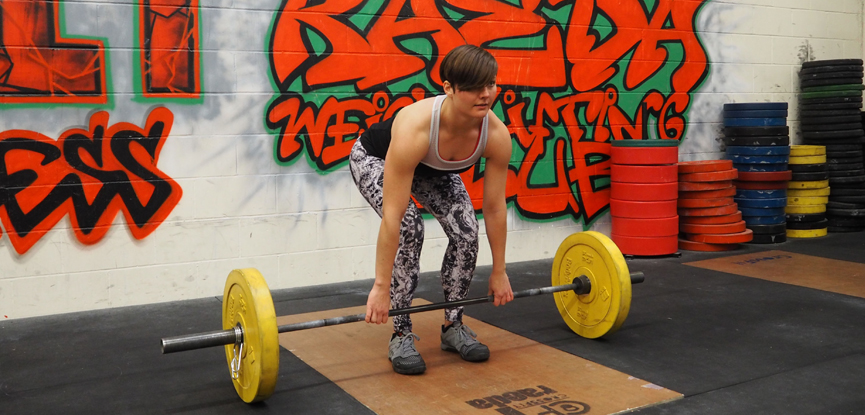
Often confused for a stiff-legged deadlift, the Romanian deadlift actually involves a partial bend in the knee (roughly to 20 degrees). This places more emphasis on the hamstrings and glutes to work hard in the movement, helping to strengthen your posterior chain.
Remember to keep a neutral spine (slight lumbar and thoracic curves, not over-arching the neck), and use blocks for heavy lifts if you’re not flexible enough to touch the bar to the floor safely.
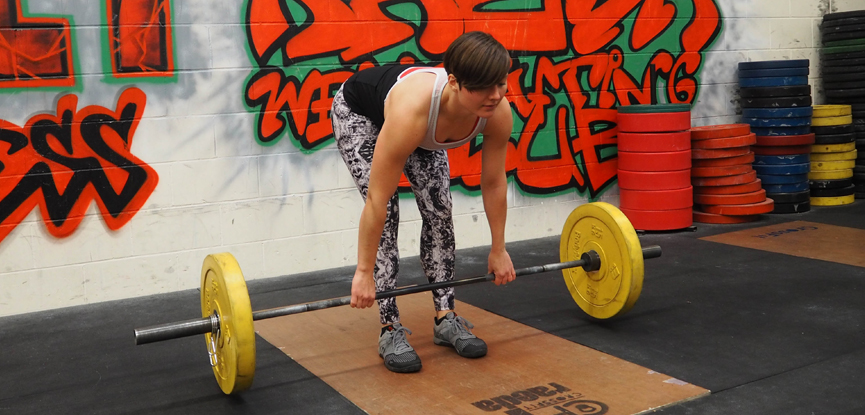
Similar to the Romanian deadlift, but with your legs straight and not locked. This is a potentially risky technique for your back, and should be kept to lower percentages of your 1RM. Use this technique to really challenge the hamstrings and glutes. Focus on a slow eccentric (lowering) phase and fast drive up on the concentric phase of the movement.
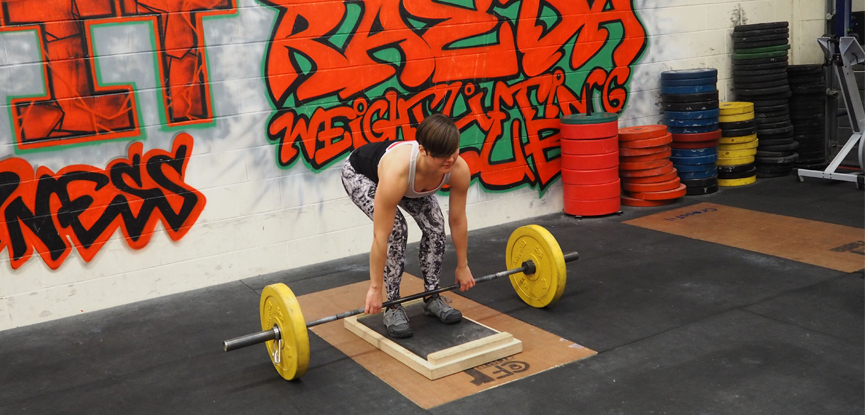
Is the first pull always your sticking point in heavy lifts? Work on this with deficit (elevated) deadlifts.
You’ll need a stable base to stand on – either a couple of flat plates, or just take the bumpers away from the platform if you have one at your gym. Focus on good posture and technique, especially if you have a tight back or hips. Pull from the lowered position to work on that bottom range of strength.
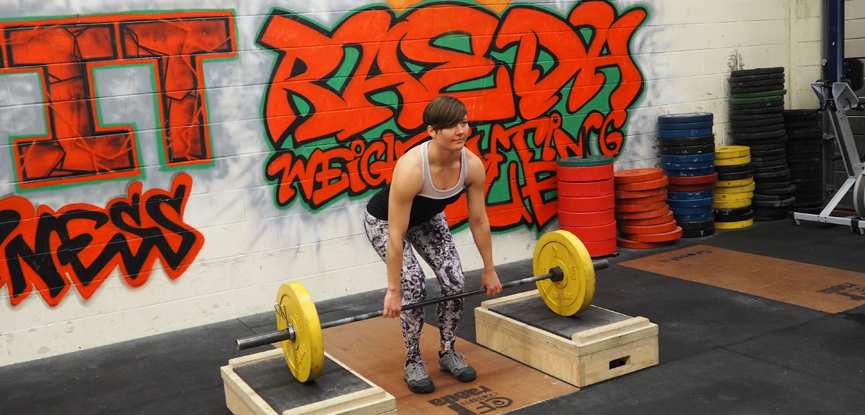
Or is the top of the deadlift where you struggle? Rather than “grinding” the bar at the top of the lift, work on your weaknesses by pulling from various heights in the rack or with blocks. Whether it’s just above the knee, or right up near the top of the movement, you can improve strength in these areas with a simple rack pull. Just remember to keep your lats engaged (set your shoulder blades in your back) and back strong.
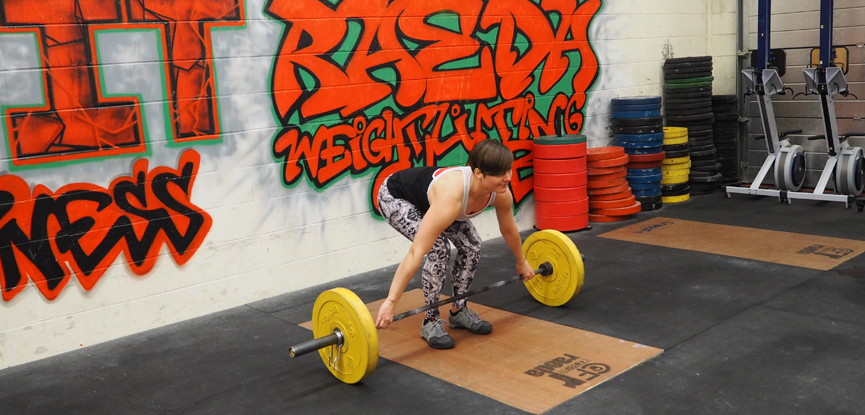
Just as the deadlift is transferable to the clean, the snatch grip deadlift is hugely transferable to the snatch. Work on that, sometimes awkward grip and also on your back strength as you pull from a different angle on those levers.
Naturally, the snatch grip is going to require you starting lower in the movement, so make sure your posture is on form at the start of each rep by sinking in lower at the hips but with your weight still forward of the bar.
Often the limiting factor in maximal or near maximal lifts is grip strength. Your legs, glutes and back may be strong enough to lift 150kg, but are your fingers and hands? There are a number of ways to either build the strength for this, or aid you in your heavier lifts, but each come with their limitations and risks.
The first and perhaps most obvious aid to grip is chalk – you know, the stuff us CrossFitters love! Chalk works by eliminating moisture, allowing your skin to have more friction with the bar, and therefore more resistance to prevent it slipping. But if you really want to improve your grip strength, consider challenging it more by lifting naked… of chalk!
Another way to work on grip strength is by using fat grips for your lighter lifts. These increase the surface area your hand has to grip on to, making it harder to get a good hold, so when you go back to a normal bar, your hands are more able to hold on.
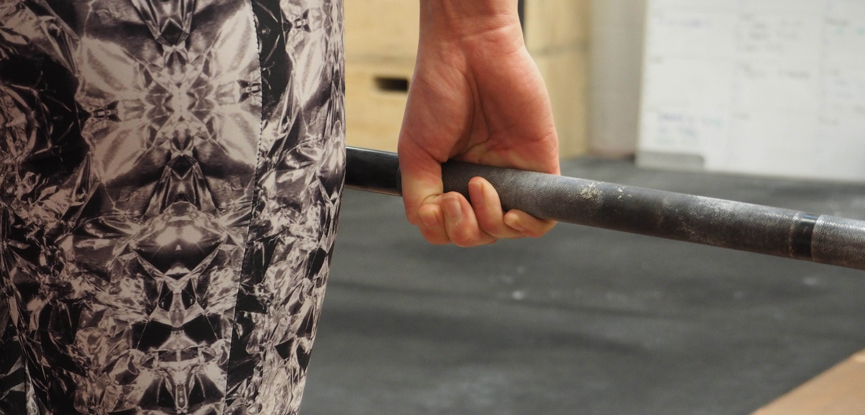
A favourite with Olympic Weightlifters, hook grip is an outstanding way to get more out of your lifts. The grip works by trapping your thumb underneath your first two fingers, rather than wrapping your thumbs over them, which prevents the bar from rolling in your hands. It’s an uncomfortable grip to get used to, and can feel as though you’re pulling your thumb out of its socket, but the benefits far outweigh the initial discomfort. You’ll even find weightlifters hook gripping their steering wheel they’re so used to it!
A popular style among power lifters and traditional body builders, mixed grip is where you hold the bar with one hand in an overhand grip, and one hand in an underhand grip. The problem with a standard overhand grip is the bar wants to roll out of your fingers, but a mixed grip works because as the bar tends to roll out of one hand, it rolls into the other. But, this grip can lead to muscular imbalances, and also a risk of injury to the biceps because of the external rotation of the underhand arm – think partial or full ruptures of the biceps. Ouch. Save this for only when it’s really needed.
Straps loop around your wrist and then the bar, with the tail end being taken up in your grip to keep it in place. They allow the load of the bar to be distributed not only in your fingers and hands, but up to your wrists too, essentially attaching the weight to your arms. The problem with straps is the same as for back supports – they give your muscles an excuse not to work harder, therefore stopping you from getting stronger. Save them for when you really need them.
As you can see, there’s more than one way to pull a heavy bar from the floor – whatever your chosen technique, the deadlift is still one of the most exciting uses of a barbell, purely because of the amount of weight you can chuck on it.
What’s your weak area in the deadlift? Do you have a sticking point? Have you tried any of these variations or grip strengthening techniques? Get in touch on Facebook and Twitter.
Back to articlesAnd get the fast-paced world of personal training delivered straight to your inbox every week
Great news, you're on the list...